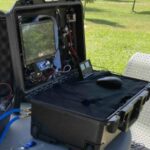
Pancreatic cancer remains one of the most formidable challenges in oncology, characterized by a dismal five-year survival rate hovering around 13 percent. This high mortality rate is largely attributed to the cancer’s notorious resistance to conventional therapies and its highly complex tumor microenvironment. Recent research from the University of Michigan has shed breakthrough light on a promising therapeutic avenue involving the simultaneous targeting of PIKfyve—a key enzyme linked with lysosomal function—and the KRAS-MAPK signaling pathway. This innovative strategy demonstrates unprecedented efficacy in preclinical models, offering renewed hope for a disease long deemed untreatable.
Pancreatic ductal adenocarcinoma (PDAC), the most prevalent and aggressive form of pancreatic cancer, poses unique obstacles for treatment due to its cellular composition and microenvironment. Intriguingly, PDAC tumors often consist predominantly of non-malignant cells, with cancerous cells comprising as little as ten percent in some tumors. This cellular heterogeneity complicates therapeutic targeting and contributes to treatment failure. Malignant cells within these tumors face significant metabolic stress because the tumor vasculature is dysfunctional, limiting nutrient delivery. Nevertheless, these cells adapt by activating alternative biochemical processes that sustain their survival and proliferation.
Central to these adaptive mechanisms are intracellular recycling pathways mediated by lysosomes—organelles traditionally known for degrading cellular waste. Researchers have long recognized that lysosomes facilitate cancer cell survival in nutrient-poor environments by recycling macromolecules and repurposing biomolecules essential for tumor growth. However, the precise molecular targets within lysosomes and their roles in PDAC remained poorly understood. The University of Michigan team focused on PIKfyve, an enzyme involved in phosphoinositide metabolism and lysosomal membrane dynamics, with prior evidence implicating it in other malignancies but unclear impact on pancreatic cancer.
Leveraging advanced genetic engineering techniques, the investigators created mouse models deficient in PIKfyve, observing a marked reduction in pancreatic tumor development compared to controls. Furthermore, pharmacological inhibition of PIKfyve using compounds apilimod and ESK981 led to significant suppression of tumor growth in these models over a ten-week treatment course. These compelling findings established that PIKfyve activity is crucial for maintaining lysosomal functions that, in turn, support PDAC progression.
To unravel the underlying molecular mechanisms, the researchers employed human pancreatic cancer cell lines treated with PIKfyve inhibitors to delineate gene expression changes. Their analyses revealed that PIKfyve suppresses the cellular demand to synthesize new fatty acids by facilitating lysosomal recycling of lipid components. When PIKfyve activity is blocked, malignant cells lose the ability to efficiently recycle fats and are forced to upregulate de novo lipid biosynthesis pathways to meet their metabolic needs. This metabolic rewiring underscores the interdependence between lysosomal function and oncogenic lipid metabolism in PDAC.
Intriguingly, the KRAS-MAPK signaling cascade—a critical oncogenic driver mutated in over 90 percent of pancreatic cancers—was identified as the pathway through which tumor cells ramp up fatty acid synthesis under PIKfyve inhibition. Given that KRAS is often considered the “master regulator” of pancreatic tumorigenesis, therapies aimed at inhibiting KRAS have garnered significant attention, some advancing into clinical trials. Nonetheless, resistance to KRAS inhibitors remains a prominent obstacle, highlighting the limitations of monotherapy in this aggressive cancer.
The University of Michigan study importantly demonstrated that dual inhibition of PIKfyve and KRAS-MAPK pathways results in profound anti-tumor effects. This combination therapy effectively eradicated pancreatic tumors in several sophisticated preclinical models, providing a strong rationale for therapeutic synergy. By simultaneously blocking lysosomal recycling and the compensatory lipid synthesis mechanism, cancer cells were deprived of essential nutrients to sustain growth, culminating in tumor regression and cure in these experimental systems.
This research serves as a compelling proof-of-concept for targeting cancer metabolism — in particular, lipid metabolism — in concert with oncogenic signaling pathways to overcome intrinsic metabolic plasticity. The findings indicate that inhibiting PIKfyve not only disrupts lysosome-driven nutrient recycling but also primes cancer cells to become more susceptible to KRAS inhibition by forcing a metabolic bottleneck. This dual-pronged approach represents a novel strategy to outmaneuver tumor adaptive mechanisms that have historically undermined treatment outcomes in pancreatic cancer.
Moreover, the study authors emphasize the eventual necessity of integrating immunotherapeutic strategies to fully extinguish residual disease. Malignant cells have evolved intricate backup pathways enabling survival despite extensive metabolic targeting. Therefore, harnessing the immune system to recognize and eradicate tumor cells that escape metabolic blockade could be the critical missing element in achieving durable cures. Ongoing research aims to identify immune recruitment modalities that cooperate with metabolic therapy for maximal effect.
In summary, this groundbreaking work delineates a new frontier in pancreatic cancer therapeutics by illuminating the vital role of PIKfyve in lysosome-mediated lipid metabolism and its interplay with KRAS-driven oncogenesis. The presented preclinical evidence heralds a promising era where combination therapies tailored to disrupt metabolic dependencies and oncogenic circuits may finally subvert this devastating disease. While challenges remain in translating these findings clinically, the study offers a beacon of hope that synergistic targeting of metabolic and signaling pathways can rewrite the therapeutic narrative for pancreatic cancer.
As the global oncology community continues to grapple with pancreatic cancer’s complexity, the identification of PIKfyve as a druggable target and the demonstrated efficacy of combining its inhibition with KRAS blockade mark a pivotal advance. This research not only enriches understanding of PDAC biology but also charts a strategic path forward towards more effective, durable therapies. Future clinical trials will be crucial to validate these preclinical successes and potentially transform standard-of-care paradigms, ultimately improving survival and quality of life for patients afflicted with this relentless malignancy.
Subject of Research: Animals
Article Title: Targeting PIKfyve-driven lipid metabolism in pancreatic cancer
News Publication Date: 23-Apr-2025
Web References:
https://www.nature.com/articles/s41586-025-08917-z
http://dx.doi.org/10.1038/s41586-025-08917-z
References:
University of Michigan, Department of Oncology et al. “Targeting PIKfyve-driven lipid metabolism in pancreatic cancer,” Nature, 23 Apr 2025.
Keywords: Health and medicine; Pancreatic tumors; Molecular targets; Cancer research; Mouse models
Tags: cellular heterogeneity in PDACinnovative cancer therapy strategiesKRAS-MAPK signaling pathwaylysosomal function in cancer cellsmetabolic stress in pancreatic tumorsnew drug targets for pancreatic cancerpancreatic cancer treatment advancementspancreatic ductal adenocarcinoma challengesPIKfyve enzyme in cancer therapypreclinical models in oncology researchtargeting non-malignant cells in tumorstumor microenvironment in pancreatic cancer


